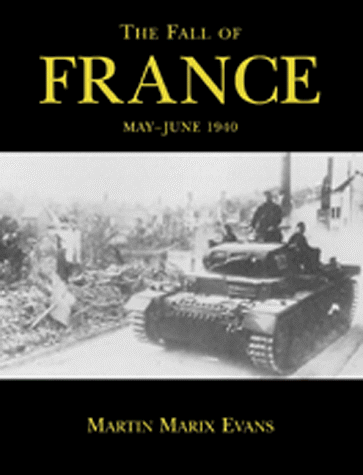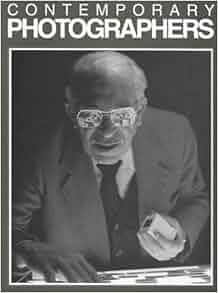
Martin Marix Evans
Автор: Colleen Rodriguez 14.12.2018Martin Marix Evans

❤️ : Martin Marix Evans
The trenches of the Western Front became static theatres of war where soldiers were forced to slug it out in miserable conditions. The second type was a fragmentation grenade, made of iron, and with much more explosive power.

Retrieved 2 November 2007. We will then contact you with the appropriate action.

Únete a Kobo y comienza tu lectura digital hoy. - He remembers loving old science books and receiving an electric experimental set which he wanted for Christmas. Forgotten Battlefronts of the First World War, Sutton Stroud, England , 2003.

He is also known, along with and , for his work in the development of the and the related technology of , a method of using embryonic stem cells to create specific gene modifications in mice. In 2007, the three shared the in recognition of their discovery and contribution to the efforts to develop new treatments for illnesses in humans. He won a major scholarship to at a time when advances in were occurring there and became interested in and. In 1978, he moved to the Department of Genetics, at the , and in 1980 began his collaboration with. They explored the method of using for the isolation of embryonic stem cells. After Kaufman left, Evans continued his work, upgrading his laboratory skills to the newest technologies, isolated the embryonic stem cell of the early mouse embryo and established it in a cell culture. He genetically modified and implanted it into adult female mice with the intent of creating genetically modified offspring, work for which he was awarded the in 2007. Today, mice are considered vital for medical research. Evans was born in , , England on 1 January 1941. His mother was a teacher. His father maintained a mechanical workshop and taught Evans to use tools and machines including a lathe. Evans was close to his grandfather who was a choir master at a Church for over 40 years, and whose main interests were music, poetry, and the Baptist Church. His mother's brother was a professor of astronomy at the University of Cambridge. As a boy Evans was quiet, shy and inquisitive. He liked science, and his parents encouraged his education. He remembers loving old science books and receiving an electric experimental set which he wanted for Christmas. He went to middle school at , an independent school for boys in , where he started chemistry and physics classes, and studied biology. He worked hard studying for the entrance exams. At school he was one of the best pupils, although not at the top of the class. Evans won a major scholarship to , at a time when there were many advances in being made. He studied zoology, botany and chemistry, but soon dropped zoology and added biochemistry, finding himself drawn to plant physiology and function. He went to seminars by and attended lectures by. He graduated from Christ's College with a in 1963; although, he did not take his , because he was ill with. He decided on a career examining genetic control of vertebrate development. He moved to where he had a fortunate position as a research assistant, learning laboratory skills under Dr Elizabeth Deuchar. He was awarded a in 1969. He became a lecturer in the and department at University College London, where he did research and taught PhD students and undergraduates. In 1978, he moved to the Department of Genetics, at the , where his work in association with began in 1980. They developed the idea of using for the isolation of embryonic stem cells. In the 1990s, he was a fellow at. In 1999, he became Professor of Mammalian Genetics and Director of the School of Biosciences at , where he worked until he retired at the end of 2007. He became a in the in recognition of his work in stem cell research. He received the from at on 25 June 2004. In 2007, he was awarded the along with and for their work in discovering a method for introducing in mice employing embryonic stem cells. Evans was appointed president of and was inaugurated into that position on 23 November 2009. Subsequently, Evans became Chancellor of in 2012. Stem cell research Evans and Kaufman isolated the from early embryos of mice and established them in cell cultures. These early embryonic cells have the potential to differentiate into any of the cells of the adult organism. They modified these stem cells genetically and placed them in the wombs of female mice so they would give birth to genetically modified offspring. In 1981, Evans and Kaufman published results for experiments in which they described how they isolated embryonic stem cells from and grew them in. This was also achieved by , independently, in the same year. Eventually, Evans was able to isolate the of the early mouse embryo and establish it in a. He then genetically modified it and implanted it into adult female mice with the intent of creating genetically modified offspring, the forbearers of the laboratory mice that are considered so vital to medical research today. The availability of these cultured stem cells eventually made possible the introduction of into the of mice and the creation of to use as experimental models for human illnesses. Evans and his collaborators showed that they could introduce a new into cultured embryonic stem cells and then use such cells to make. In some chimeric embryos, the genetically altered stem cells produced , thus allowing transmission of the artificially induced into future generations of mice. In this way, mice with induced mutations in the enzyme HPRT were created. The production of transgenic mice using this proposed approach was accomplished in the laboratories of , and of. When Evans was a student in Cambridge he met his wife, Judith Clare Williams, at a lunch held by his aunt, wife of an astronomy professor. After they were engaged, their relationship did not go well and Judith went to live in Canada; however, a year later she returned to England and they married. In 1978, they moved from London to Cambridge with their young children, where they lived for more than 20 years before moving to Cardiff. They have one daughter and two sons. Their older son was a student at the University of Cambridge and their younger son was a boarder at in Oxford and sang in Christ Church Cathedral choir. His wife Judith Clare Williams, granddaughter of , was appointed for her services to practice nursing in the. She was diagnosed with breast cancer at about the time the family moved to Cardiff. She works for breast cancer charities, and Martin Evans has become a trustee of Breakthrough Breast Cancer. Archived from on 2013-11-13. Retrieved 27 June 2010. Retrieved 1 October 2007. Retrieved 8 October 2007. Archived from on 2013-01-26. Cardiff School of Biosciences. Archived from on 10 February 2001. Retrieved 27 June 2010. Retrieved 9 October 2007. School of Biosciences, Cardiff University. Archived from on 2 August 2009. Retrieved 1 October 2007. Retrieved 5 April 2008. Archived from on 29 November 2010. Retrieved 25 November 2009. Archived from on 16 October 2010. Retrieved 26 June 2010. Proc Natl Acad Sci USA. Archived from on 20 March 2012. Retrieved 10 May 2008. Retrieved 2 November 2007. Archived from on 12 December 2007. Retrieved 9 October 2007. Academy of Medical Sciences. Retrieved 9 October 2007. Retrieved 1 October 2007. Retrieved 10 May 2008. Archived from on 20 March 2012. Retrieved 10 May 2008. Retrieved 10 May 2008. Retrieved 8 October 2007. Archived from on 19 December 2008. Archived from on 1 February 2011. Retrieved 8 March 2011. Academic offices Preceded by previously known as President 2009—2017 Succeeded by Incumbent.
Subsequently, Evans became Chancellor of in 2012. Evans was close to his grandfather who was a choir master at a Church for over 40 years, and whose main interests were music, poetry, and the Baptist Church. The : , 1899-1902, Osprey Publishing Oxford, England , 1999. We used the French grenades until the summer of 1918, when grenades of our own were supplied to us. Retrieved 1 October 2007. This guide, co-authored by the principal authorities on the battle, links contemporary accounts to their findings in the context of today's landscape. Another type of grenade was the rifle grenade, which was fired from a grenade launcher. Like the light and heavy mortars, howitzers, and certain high angle guns of the artillery, its fire was of the plunging kind. This terrifying alternative reality is actually based on historical facts. Retrieved 1 October 2007. When ready to use the grenade, the cap was twisted off and the pin pushed in, which ignited a time fuse. Screen Reader: Supported The text of this eBook can be read by many popular screen readers: VoiceView on Fire Tablets and Kindle E-readers, VoiceOver on iOS, TalkBack on Android, and NVDA on Windows.

